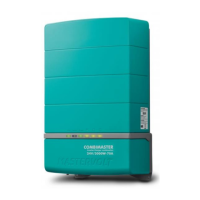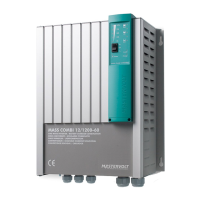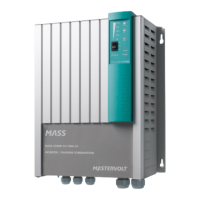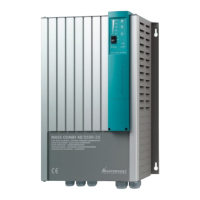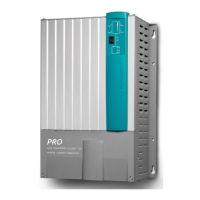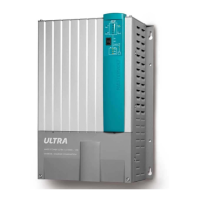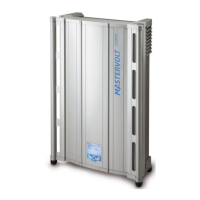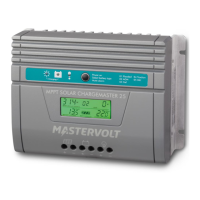4 INSTALLATION
4.1 Unpacking
The delivery includes:
• CombiMaster Inverter/Charger
• 1× Temperature sensor
• 1× MasterBus terminator
• 1× Drop cable CZone/MB (1m)
• Mounting bracket
• User and installation manual
After unpacking, check the contents for possible damage. Do not use the product if it is damaged. If in
doubt, contact your supplier.
Check from the identification label (see section 2.3) whether the battery voltage is the same as the
nominal output voltage of the CombiMaster Inverter/Charger (e.g. 24V battery set for a 24V battery
charger). Also check that the AC output voltage and output power of the CombiMaster Inverter/Charger
complies with your system and loads.
4.2 Location
• The CombiMaster Inverter/Charger is designed for indoor use only.
• Ambient temperature: 14°F to 140°F [-10°C to 60°C], power derating above 104°F [40°C].
• Humidity: 5-95% non-condensing
• This device requires a minimum of 4" [100mm] of clearance on every side to ensure safety and
proper ventilation
• If the CombiMaster Inverter/Charger is installed in the immediate vicinity of living areas, take into
account that the fan of the CombiMaster Inverter/Charger can produce noise when operating.
• If the CombiMaster Inverter/Charger is installed in a CZone or MasterBus network, take the network
powering into consideration.
• The CombiMaster Inverter/Charger can be mounted horizontally (IP 21) as well as vertically (IP 23).
• FCC Class B notification: This equipment has been tested and found to comply with the limits for a
Class B digital device, pursuant to part 15 of the FCC Rules. These limits are designed to provide
reasonable protection against harmful interference in a residential installation. This equipment
generates, uses and can radiate radio frequency energy and, if not installed and used in
accordance with the instructions, may cause harmful interference to radio communications.
However, there is no guarantee that interference will not occur in a particular installation. If this
equipment does cause harmful interference to radio or television reception, which can be
determined by turning the equipment off and on, the user is encouraged to try to correct the
interference by one or more of the following measures:
- Reorient or relocate the receiving antenna
- Increase the separation between the equipment and receiver.
- Connect the equipment into an outlet on a circuit different from that to which the receiver is
connected.
- Consult the dealer or an experienced radio/TV technician for help.
Note: The changes or modifications not expressly approved by the party responsible for compliance
could void the user's authority to operate the equivalent.

